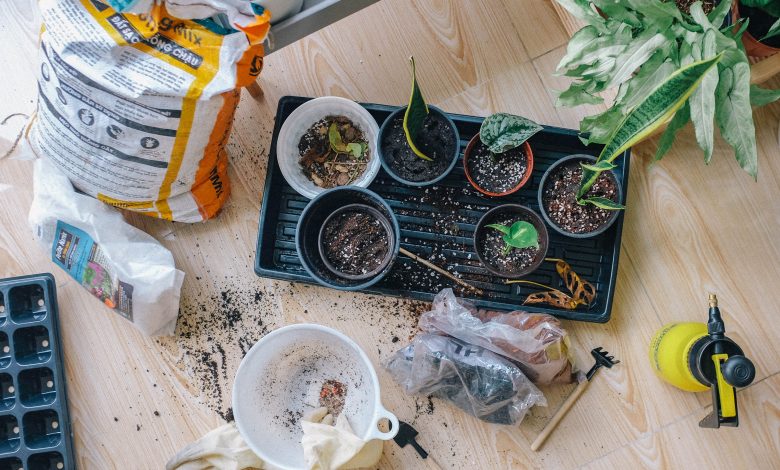How to Prevent Mildew in Your Garden

Since mildew can destroy the crops in your garden, it would be best to prevent it before it occurs. You need to learn the best powdery mildew prevention and treatment methods before it affects your vegetables and fruits.
What is Mildew?
Powdery mildew is a disease caused by a combination of fungi and affects different types of crops. At first, you’ll notice a whitish-grey powder on your plants before the leaves turn brown or yellow. It would be best if you acted fast to treat powdery mildew because it spreads rapidly through physical contact or wind, causing damage to the crops.
How Does Powdery Mildew Look Like?
You need to know what powdery mildew looks like to prevent it from spreading when you notice it for the first time.
Apples – White spots on fruits, leaves, and stems.
Roses – Flower buds will have a white powder.
Cantaloupe – Stems and leaves turn brown, and low fruit production
Zinnias – White powder on buds, leaves, and stems.
Squash – White patches on the leaves and vines.
Raspberries – Leaves become deformed.
Peas – White marks on pods and leaves.
Powdery Mildew Protection
Use Vinyl Tarps on Your Garden
Use a heavy-duty vinyl tarp to cover your plants as the winter and rainy season approaches. It will allow your late-seasoned crops to live longer and prevent them from getting affected by mildew and frost.
Consider Mildew-Resistant Plants
If your garden experienced powdery mildew in the past, consider mildew-resistant crops such as roses, cantaloupe, peas, and squash.
Prune Your Plants to Enhance Air Circulation
Avoid leaving vines and foliage on the ground because they attract pests and diseases. Your plants should have proper air circulation since it prevents fungal infections. Prune your plants to allow sufficient sunlight and air to reach the plants.
Water Your Plants Correctly
The best time to water your plants should be in the morning. Watering them in the evening creates a damp and cool environment that encourages powdery mildew and other fungal infections. Also, use drip instead of overhead irrigation to enable the water to get into the soil instead of the leaves. Avoid over-watering your plants. Allow the top two inches of soil to dry before adding more water. Damp water encourages fungal diseases.
Keep Your Plant Debris Clean
Plant trimmings and leaves can be a breeding ground for fungus. To avoid that, remove the debris from around your plants.
Prevent and Treat Powdery Mildew Using a Milk Solution, Baking Soda Solution, or Potassium Bicarbonate
Apply some castle soap and baking soda solution on the uninfected leaves every seven days to eradicate powdery mildew. Mix one teaspoon of liquid castile soap and one baking soda in two pints of water. Spray the mixture to prevent the first signs or spread of mildew on your plants.
You can also use a milk solution every seven days to treat powdery mildew on your plant. The solution creates works as an antiseptic when exposed to the sun. Mix 40% of milk and 60% of water and spray on the affected leaves and those of the nearby plants. Ensure the mixture lightly coats all the surfaces when the sun is shining for effective results.
Additionally, you can mix 10ml liquid castile soap and one potassium bicarbonate powder in five liters of water and spray the mixture on all parts of the plant.
Cut Off Parts of the Plants and Destroy them
If you notice powdery mildew on your plants, you can prevent it from spreading further by removing and destroying the affected plant parts. Clean your hands, gloves, and anything else that comes into contact with the mildew with soap and water after removing the affected parts.
If All methods Fail, Remove the Entire Plant
If you cannot control powdery mildew, the only option you may have is to remove the whole plant. Unhealthy plants will attract more diseases and pests. A plant with powdery mildew can quickly spread to other plants. Remove the affected plants and destroy them.
When you plant crops in your garden, you want to do everything possible to ensure they grow healthy. One thing that destroys crops, which you should be keen about, is powdery mildew. Learning to avoid mildew from destroying your products would be best.




